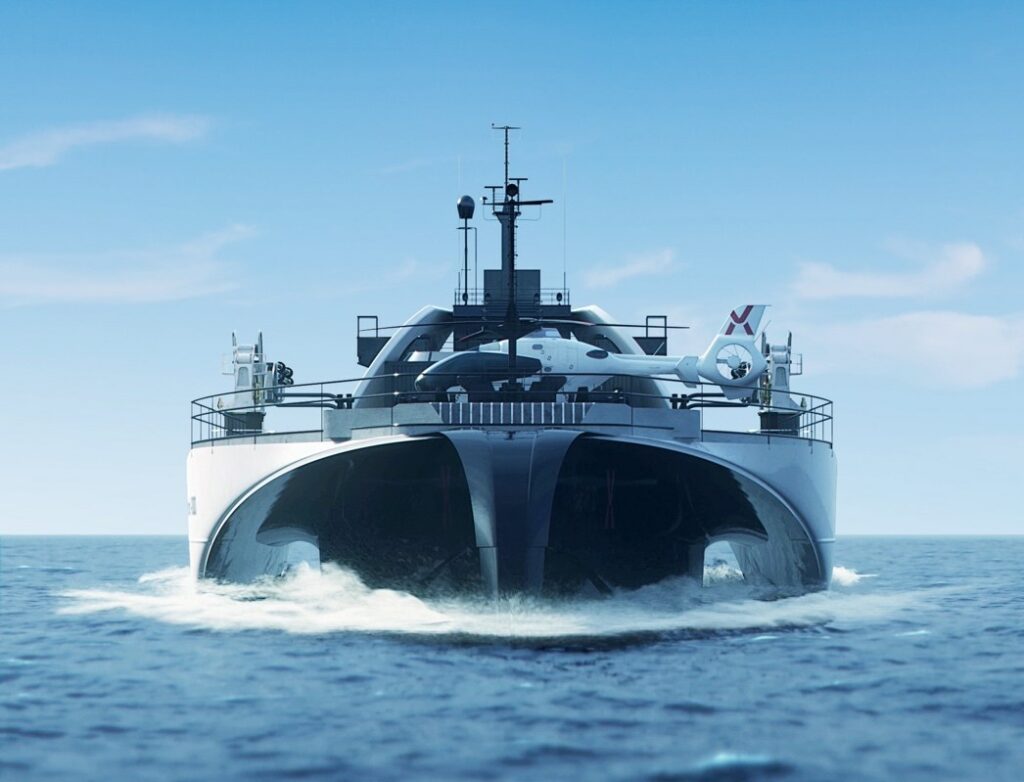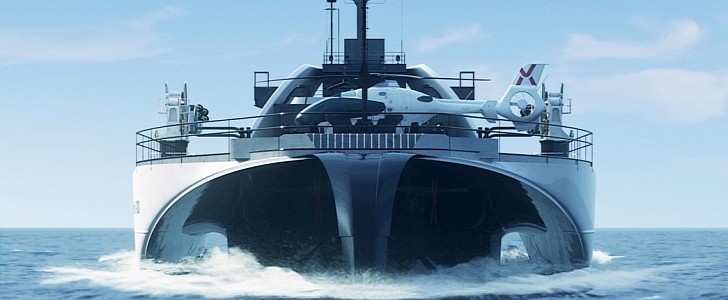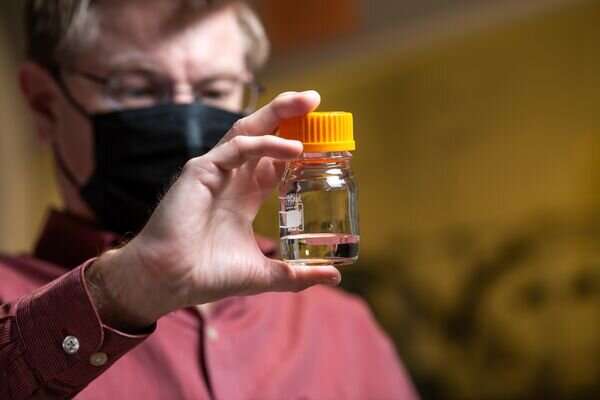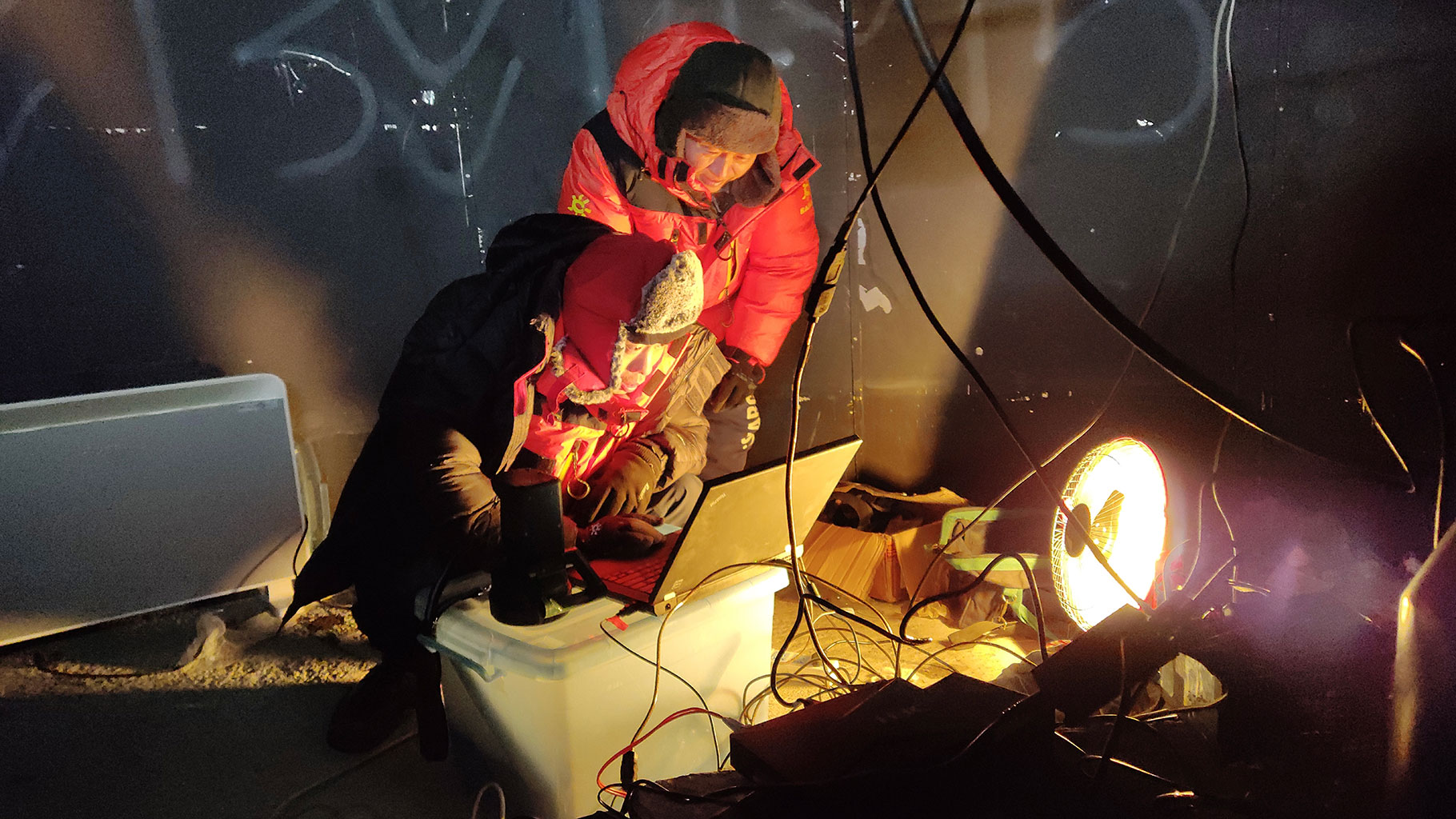We know that Earth's magnetic field is always shifting in its direction and its strength. Just how quickly these changes are happening is of great interest, considering this planetary feature keeps us all protected from violent cosmic radiation.
Now, a new analysis of ancient lava flows in eastern Scotland – filling in some crucial blanks in our magnetic field history – has backed up previous research pointing to a 200-million-year cycle during which the field weakens and then strengthens again.
The team also used the magnetic history they found buried in the geological record to double-check other measurements made over the last few decades, and to chart a history of Earth's magnetic field going back some 500 million years.
"Our findings, when considered alongside the existing datasets, support the existence of an approximately 200-million-year long cycle in the strength of the Earth's magnetic field related to deep Earth processes," says paleomagnetist Louise Hawkins, from the University of Liverpool in the UK.
"As almost all of our evidence for processes within the Earth's interior is being constantly destroyed by plate tectonics, the preservation of this signal for deep inside the Earth is exceedingly valuable as one of the few constraints we have."
Thermal and microwave paleomagnetic analysis techniques were used on rock samples from the ancient lava flows, with the alignment of mineral crystals inside them revealing the state of Earth's magnetic field at the time they were originally formed.
The team discovered that between 332 and 416 million years ago, there was a dip in the magnetic field that matches up with another one from 120 million years ago. During the earlier period, now called the Mid-Palaeozoic Dipole low (MPDL), the field surrounding Earth was around a quarter of the strength that it is today.
Those dates match up with the 200-million-year cycle, and give experts some important new insights into how the magnetic field was behaving more than 300 million years ago, in the lead up to a notable Superchron – the name given to an extended period of time when the field stays stable.
"This comprehensive magnetic analysis of the Strathmore and Kinghorn lava flows was key for filling in the period leading up the Kiman Superchron, a period where the geomagnetic poles are stable and do not flip for about 50 million years," says Hawkins.
If this cycle holds true, and the magnetic pole flips or reversals tend to happen every 200,000-300,000 years, we're actually due for another one – much to the concern of scientists, who aren't sure what the effect will be on all the technology and gadgets we obviously didn't have last time it happened.
The more we know about the history of Earth's magnetic field in general, the better we can predict what it's going to do next. If our force field against space radiation starts to develop problems, we need to know about it as early as possible.
There was another bonus finding to the research too: it has previously been thought that flips in the magnetic field's orientation happen when the field is weaker, and this is another hypothesis that the new data backs up.
"Our findings also provide further support that a weak magnetic field is associated with pole reversals, while the field is generally strong during a Superchron, which is important as it has proved nearly impossible to improve the reversal record prior to around 300 million years ago," says Hawkins.
The research has been published in PNAS.
By TEL-AVIV UNIVERSITY AUGUST 18, 2021

Excavations at Tel Tifdan / Wadi Fidan. Credit: Thomas E. Levy
International research by Tel Aviv University, the Istituto Nazionale di Geofisica e Vulcanologia, Rome, and the University of California San Diego uncovered findings regarding the magnetic field that prevailed in the Middle East between approximately 10,000 and 8,000 years ago. Researchers examined pottery and burnt flints from archaeological sites in Jordan, on which the magnetic field during that time period was recorded. Information about the magnetic field during prehistoric times can affect our understanding of the magnetic field today, which has been showing a weakening trend that has been cause for concern among climate and environmental researchers.
The research was conducted under the leadership of Prof. Erez Ben-Yosef of the Jacob M. Alkow Department of Archaeology and Ancient Near Eastern Cultures at Tel Aviv University and Prof. Lisa Tauxe, head of the Paleomagnetic Laboratory at the Scripps Institution of Oceanography, in collaboration with other researchers from the University of California at San Diego, Rome, and Jordan. The article was published in the journal PNAS.
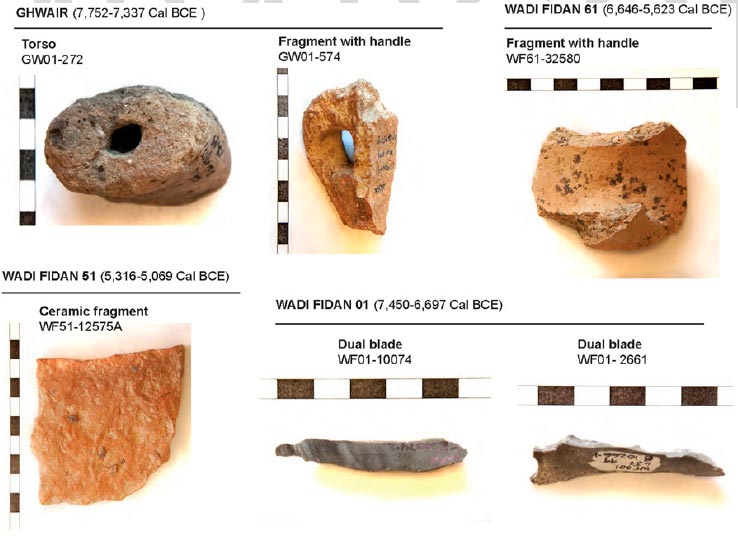
Burnt flints and ceramics used to reconstruct the strength of the ancient geomagnetic field. Credit: Proceedings of the National Academy of Sciences
Prof. Ben-Yosef explains, “Albert Einstein characterized the planet’s magnetic field as one of the five greatest mysteries of modern physics. As of now, we know a number of basic facts about it: The magnetic field is generated by processes that take place below a depth of approximately 3,000 km beneath the surface of the planet (for the sake of comparison, the deepest human drilling has reached a depth of only 20 km); it protects the planet from the continued bombardment by cosmic radiation and thus allows life as we know it to exist; it is volatile and its strength and direction are constantly shifting, and it is connected to various phenomena in the atmosphere and the planet’s ecological system, including – possibly – having a certain impact on climate. Nevertheless, the magnetic field’s essence and origins have remained largely unresolved. In our research, we sought to open a peephole into this great riddle.”
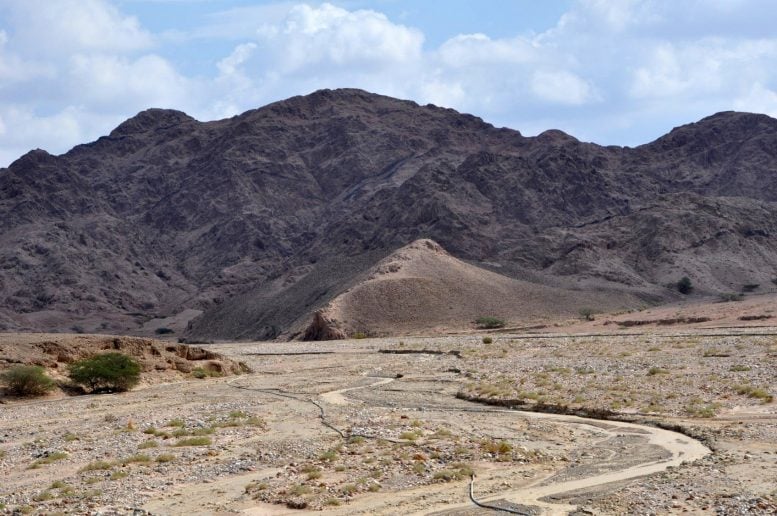
Wadi Fidan. Credit: Thomas E. Levy
The researchers explain that instruments for measuring the strength of the Earth’s magnetic field were first invented only approximately 200 years ago. In order to examine the history of the field during earlier periods, science is helped by archaeological and geological materials that recorded the properties of the field when they were heated to high temperatures. The magnetic information remains “frozen” (forever or until another heating event) within tiny crystals of ferromagnetic minerals, from which it can be extracted using a series of experiments in the magnetics laboratory. Basalt from volcanic eruptions or ceramics fired in a kiln are frequent materials used for these types of experiments.
The great advantage in using archaeological materials as opposed to geological is the time resolution: While in geology dating is on the scale of thousands years at best, in archaeology the artifacts and the magnetic field that they have recorded can be dated at a resolution of hundreds and sometimes even tens of years (and in specific cases, such as a known destruction event, even give an exact date). The obvious disadvantage of archaeology is the young age of the relevant artifacts: Ceramics, which have been used for this purpose up until now, were only invented 8,500 years ago.
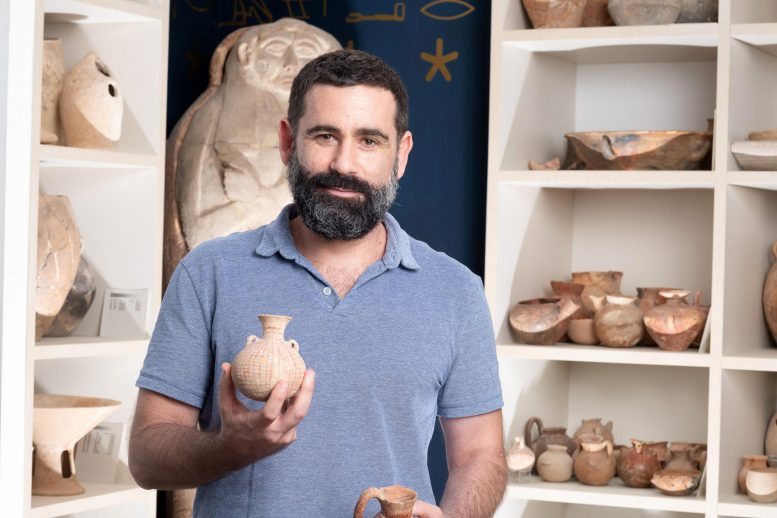
Prof. Erez Ben-Yosef. Credit: Yoram Reshef
The current study is based on materials from four archaeological sites in Wadi Feinan (Jordan), which have been dated (using carbon-14) to the Neolithic period – approximately 10,000 to 8,000 years ago — some of which predate the invention of ceramics. Researchers examined the magnetic field that was recorded in 129 items found in these excavations, and this time, burnt flint tools were added to the ceramic shards.
Prof. Ben-Yosef: “This is the first time that burnt flints from prehistoric sites are being used to reconstruct the magnetic field from their time period. About a year ago, groundbreaking research at the Hebrew University was published, showing the feasibility of working with such materials, and we took that one step forward, extracting geomagnetic information from tightly dated burned flint. Working with this material extends the research possibilities tens of thousands of years back, as humans used flint tools for a very long period of time prior to the invention of ceramics. Additionally, after enough information is collected about the changes in the geomagnetic field over the course of time, we will be able to use it in order to date archaeological remains.”
An additional and important finding of this study is the strength of the magnetic field during the time period that was examined. The archaeological artifacts demonstrated that at a certain stage during the Neolithic period, the field became very weak (among the weakest values ever recorded for the last 10,000 years), but recovered and strengthened within a relatively short amount of time.
According to Prof. Tauxe, this finding is significant for us today: “In our time, since measurements began less than 200 years ago, we have seen a continuous decrease in the field’s strength. This fact gives rise to a concern that we could completely lose the magnetic field that protects us against cosmic radiation and therefore, is essential to the existence of life on Earth. The findings of our study can be reassuring: This has already happened in the past. Approximately 7,600 years ago, the strength of the magnetic field was even lower than today, but within approximately 600 years, it gained strength and again rose to high levels.”
Reference: “The strength of the Earth’s magnetic field from Pre-Pottery to Pottery Neolithic, Jordan” by Anita Di Chiara, Lisa Tauxe, Thomas E. Levy, Mohammad Najjar, Fabio Florindo and Erez Ben-Yosef, 16 August 2021, Proceedings of the National Academy of Sciences.
DOI: 10.1073/pnas.2100995118
The research was carried out with the support of the US-Israel Binational Science Foundation, which encourages academic collaborations between universities in Israel and in the US. The researchers note that in this case, the collaboration was particularly essential to the success of the study because it is based on a tight integration of methods from the fields of archaeology and geophysics, and the insights that were obtained are notably relevant to both of these disciplines.

